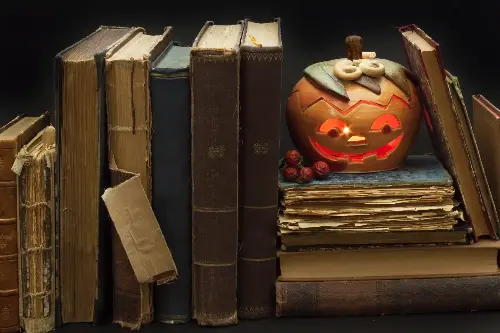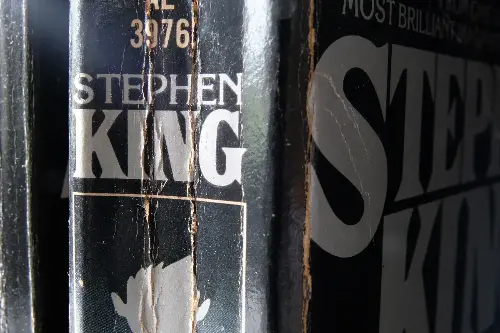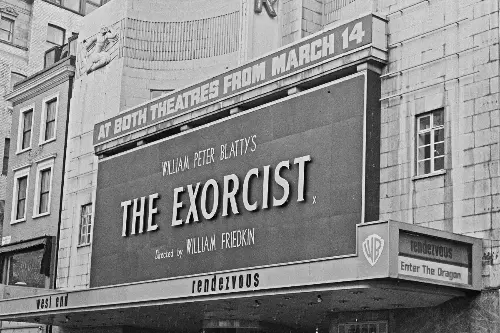The realm of horror is a unique landscape where terror and fascination blend seamlessly. It's a genre that effectively explores our deepest fears, simultaneously thrilling and chilling to the core. Over the years, several horror novels have transcended their pages to terrify us on the big screen. A select few of these adaptations are more than just movies; they're seminal works that have set unparalleled standards in cinema. Here, we delve into four such classic horror books, whose film adaptations have not only done justice to the original works but have also left an indelible mark on the world of filmmaking.

"Psycho" by Robert Bloch: The Advent of Psychological Horror
Alfred Hitchcock's "Psycho," adapted from the novel by Robert Bloch, is perhaps one of the most iconic horror films ever made. The 1960 masterpiece is a study in psychological horror, a path less trodden at the time. The story of Norman Bates, a seemingly innocuous motel owner harbouring a sinister split personality, caused an uproar amongst audiences and critics alike.
What set "Psycho" apart was not just the shocking narrative twist but also Hitchcock's innovative techniques, like the now-famous shower scene that used 77 different camera angles and the decision to kill off the protagonist early in the film; both elements were almost inconceivable in that era. This deft blending of story and technique elevated psychological horror to mainstream cinema, forever changing the landscape of the horror genre.
"The Exorcist" by William Peter Blatty: Unleashing Demonic Terror
A tale of demonic possession and the subsequent exorcism, William Peter Blatty's "The Exorcist" was a novel that struck at the very core of human fragility—the battle within. Its 1973 film adaptation by director William Friedkin pushed the boundaries of what was acceptable on screen at the time. The visceral portrayal of a young girl's possession and the struggle to save her soul was as disturbing as it was engrossing.
Friedkin's insistence on realism, from the use of actual medical procedures to the genuine reactions of cast members, created a film that felt almost too real. "The Exorcist" was lauded for its special effects and sound design that, combined with superb acting, made this adaptation an enduring and evocative experience that has terrified generations.

"The Shining" by Stephen King: A Labyrinth of Madness
Stanley Kubrick's 1980 adaptation of Stephen King's "The Shining" is often cited as one of the greatest horror films ever made. While King himself was famously critical of the adaptation, Kubrick's vision brought a chilling atmosphere and unrelenting tension that far surpassed typical jump scares. The story's descent into the madness lurking within the isolated Overlook Hotel and indeed within Jack Torrance himself was crafted with chilling precision.
From the hypnotic imagery of the twins in the corridor to Jack Nicholson's manic "Here's Johnny!" scene, "The Shining" was a masterclass in psychological terror. Kubrick's meticulous direction and use of the Steadicam for flowing, uneasy shots of the hotel's corridors have created some of the most indelible images in the horror canon.
"Jaws" by Peter Benchley: Fear from the Depths
Peter Benchley's novel "Jaws" spawned the prototypical summer blockbuster with its 1975 adaptation directed by Steven Spielberg. The story of a monstrous great white shark stalking the waters of Amity Island became an instant cultural phenomenon. Beyond the creature-feature thrill, it examined the human drama and conflict in the face of mortal danger.
Spielberg's innovative use of point-of-view shots from beneath the water, coupled with John Williams' ominous score, invoked primal fear with every note heralding the shark's approach. "Jaws" was not just a film about a shark attack; it brought the audience into the water, leveraging the terror of the unseen, the power of suggestion, over gratuitous display. It's a cinematic technique that has continued to influence suspense and horror films to this day.

The Legacy of Adaptation: From Page to Screen
These four adaptations serve as a testament to the power of cinema to transform literary terror into visual spectacle. Each movie, in its own right, has set an unprecedented standard, not just in the horror genre but in filmmaking as a whole. They offer a vital lesson in the delicate art of adaptation, honouring the source material while reimagining it with a distinct cinematic voice, thereby carving their niches in both the literary and cinematic worlds.
As we ponder the alchemy that allows a horror book to morph seamlessly into a filmic masterpiece, it becomes clear that at the intersection of a skilled director, a heartfelt script, and a cast and crew aligned in their chilling vision lies the potential for cinematic immortality. It's a blend that has given these tales of terror a new lease on life, continuing to captivate and terrify audiences decades after they first emerged from the shadows of the imagination. In the end, these adapted narratives remind us that while fear may originate in the mind, its resonance is deeply felt in the pounding of the heart—an experience that both literature and film can furnish in spades.
